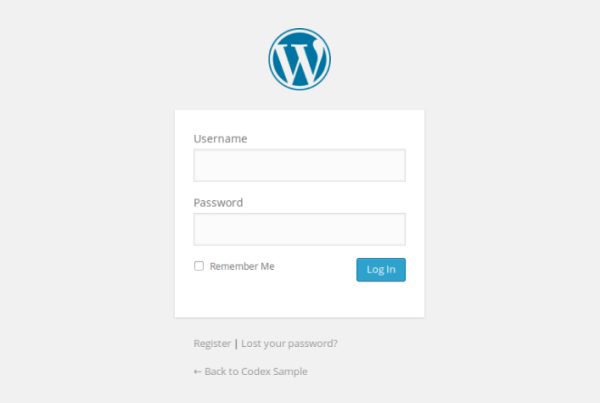Upwork is the most popular labor marketplace. It has hundreds of thousands of clients looking for work, and even more solution providers in the form of freelancers, agencies, and associations of various sorts. But despite its ability to grow into a massive corporation generating nearly $400 million in revenue in 2020, the Upwork model has serious flaws. In this blog, I will focus on the labor distortions, specifically in India, that are quickly eating away at the the value of the platform.
I have been living in India since 2004. I originally came here on a long-term tourist visa, and stayed multiple years. One of the things I learned about trading in the Indian marketplace is that there is no set price. Everything is up for haggling, and the white color of my skin almost always meant my prices started higher, sometimes exorbitantly so. But in general, I expected my “skin tax” to be about 100%. If an item was 100 rupees, unless it was clearly marked like a candy bar or bottle of Coke, I would expect to pay 200 rupees. But even marked items like Coke are regularly priced higher for me. After inquiring, I’ve been told it was for storage, and even for the cost of refrigeration for a cold drink. There were times when I could negotiate down to a more reasonable rate, and many other times when the seller’s simply refused to sell to me at the same rate as the locals.
Case in point. When you arrive in any hub in India through an airport or train station, you will always be greeted by a swarm of eager taxi drivers seeking your business. They will immediately start offering amenities to get your attention, and will not share any prices because they do not know your destination. If you share your location, they will each try to coax you away from the larger crowd so they can share their price. And then they will do everything in their power, including physically guiding you to their car, to prevent you from sharing your destination and getting other prices from their competitors.
Their prices will always start high. If you are white, there is almost no limit, and your price quotes will almost always be higher than locals. Once you get comfortable with the process of negotiation, you will find that you can drive prices far down from their original, sometimes down to 10-20% of the original quote. As an American, I like fixed, transparent prices, and have felt the exaggerated quotes were discriminatory and unfair. I would often seethe with anger, and seek other drivers or sellers who started their quotes closer to the lowest price I had already received, in an effort to award honesty. But in all of my years of travel in the country, I do not think that my recognition of honesty has made even the slightest dent in the tendencies of these sellers. They still quote me massively-inflated prices when I arrive anywhere, and do not show the slightest bit of remorse or shame when we negotiate a price that is one-fifth their original asking offer.
My protestations have never changed anything, so I began to seek out solutions. Over time, I found the most reliable way to get fair rates was to get assistance from trusted Indian friends in making larger purchases. This served me well, and in 2010 when I returned to India on a business visa to open our offshore development center, I employed that tactic. But this time with employees, and not friends.
As my Indian business grew, I rarely interacted with vendors except on very large purchases. I also never got involved in the day-to-day purchasing decisions and hires. I did need to approve them, but through a line of trustworthy administrators and managers, my company was able to get the same pricing on products that locals enjoyed. Occasionally I would encounter price gouging, especially when I got involved in a purchase, but a multi-million dollar investment into the country seemed to insulate me and my organization from the worst abuses. That has worked out to our great advantage, as we have been able grow year after year by selling IT labor services.
But not every startup entrepreneur or company can or wants to create an offshore center in India. And so they often seek low-cost, high-quality offshore labor through platforms like Upwork. And just like the swarm of taxi drivers at the airport, the same thing happens on Upwork. Published freelancer rates have continued to edge higher and higher every year and have no relationship to actual skill or the cost-of-living in these countries. Take for example one woman we recently hired.

She advertises her rate at $33 per hour, or about $5,610 per month. In India, at today’s exchange rate, that equates to about 420,000 INR, the country’s currency. That is the labor rate I would pay a full-time president of a USD $5-10mn company here with 15-20 years of experience. Needless to say, we negotiated her down to 1/3rd of her asking price, to $12 per hour. Though at $12 per hour, we can hire a full-time team lead, we were in need of these skills. But after working with this person for a few weeks, not only did we discover that she was likely distributing work to a group of other people, but she had great difficulties completing tasks that would be expected by someone at $3 per hour.
So to be clear, this contractor we found and hired on Upwork:
- demanded $33 per hour
- settled for $12 per hour
- but provided $3 per hour of skilled labor
She was willing to reduce her rates nearly 70% to take our job. And even that was fully 400% above the competitive market value of her labor. But even more shocking, is that she advertises her skills at 1100% greater than the competitive value of her labor. This is not uncommon. In fact, as a long-time user of Upwork and Elance before it, we have spent millions of dollars in these marketplaces, and have seen and experienced the labor inflation directly.
Unlike me, most clients have not spent nearly two decades living and building a business in India. They do not understand how it works here, and when they encounter the swarm, however, they are often unable to make sense of it. I would not call this particular practice “deceptive”. One of the glories of being a business-owner and freelancer is that you are free to set your rates however you like. The problem, however, it that this labor rate inflation is disconnected from the value it offers, eroding the value of the offshoring option as perceived by clients.
In their 2018 Annual Report, Upwork stated that their “… mission is to create economic opportunities so people have better lives”. While this is noble, there is a notable absence of concern with the other half of their constituency: the clients and buyers whose hiring dollars are creating these economic opportunities. While it is trendy to disregard the needs of the presumably affluent in favor of the aspiring classes, the Upwork marketplace cannot be so evenly divided. Clients and entrepreneurs on Upwork are not necessarily more affluent than the sellers, contractors and freelancers. It is a mixed bag, and all sides should expect to benefit from the economic opportunities present in bringing these individuals and groups together. But right now, that value is tilting precariously in one direction, destroying the value for one half of the participants.
My goal is not to drive down labor rates in India. My goal is to meet somewhere in the middle. And this, is not the middle. This, is a feeding frenzy with no clear long-term winners. These contractors do not deliver the value they are advertising, and the clients know this because for the same price they can hire professionals from their own country with stronger educational backgrounds and values similar to their own. But I know the developing world well enough to know that this behavior will not stop, and will in fact accelerate until clients are priced out. So, while this marketplace is still viable, it is incumbent upon clients to be aware of this price gouging, and do not hesitate to negotiate harder.



























